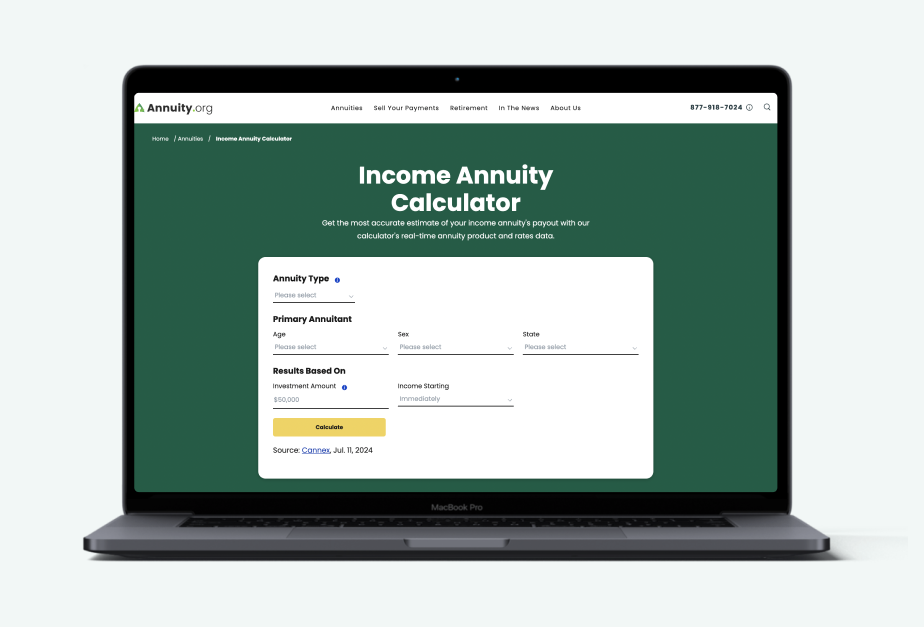Today’s Best Fixed Index Annuity Cap Rates by Term
| Rate Term | Rate | Provider | AM Best Rating |
|---|---|---|---|
| 3 Year | 7.75% | Oceanview Life and Annuity Company | A |
| 5 Year | 10.45% | Minnesota Life Insurance Company – A Securian Co. | A+ |
| 6 Year | 7.90% | Americo Financial Life and Annuity Insurance Company | A |
| 7 Year | 10.70% | Minnesota Life Insurance Company – A Securian Co. | A+ |
| 8 Year | 8.55% | Midland National Life Insurance Company | A+ |
| 9 Year | 9.75% | Lincoln Financial | A |
| 10 Year | 11.00% | Farmers Life Insurance Company | B++ |
| 12 Year | 7.75% | North American Company for Life and Health Insurance | A+ |
| 14 Year | 10.00% | SILAC Insurance Company | B+ |
| 15 Year | 7.00% | Athene Annuity and Life Company | A+ |
Not all insurers and rates are available in all states. Product features, benefits and options for liquidity or income can vary widely. A thorough evaluation with the guidance of a financial professional is recommended.
- Most cap rates decreased slightly across several terms. The 3-, 5-, 6-, 7-, and 9-year terms all saw modest declines, with reductions ranging from 0.25% to 0.35%. These lower caps suggest insurers pulled back slightly on growth potential this week.
- Top Rate Shift: 10.75% → 11.00% (10-Year Term). The 10-year term was the only category to rise, increasing from 10.75% (Axonic Insurance Services) to 11.00% (Farmers Life Insurance Company), now the highest available cap rate across all terms.
What Are Fixed Index Annuities?
Fixed index annuities (FIAs) are an investment product typically purchased from insurance companies. Annuity performance is linked to a financial index, such as the S&P 500 Composite Stock Price Index.
FIAs are a popular choice among investors because they have rates and caps that provide protection when the market is performing poorly and the opportunity to earn higher interest, up to the annuity’s cap, when the market is performing poorly.
The balance between risk and protection makes them ideal for investors looking for a steady income that allows for more growth than a fixed annuity but less risk than a variable annuity. And, because your annuity is getting market exposure, the potential returns are generally higher than some other common investment vehicles, such as a certificate of deposit, or CD.
How Fixed Index Annuity Rates Work
When you purchase an FIA, you make a premium payment to the issuing company in exchange for regular annuity payments and guaranteed minimum interest accrual. Interest accrual is tied to the performance of the selected market index.
If the index performs well, you’ll earn more interest. If the index performs poorly, you’ll accrue less interest, though you won’t experience losses. That’s because when you buy an FIA, the insurance company protects against risk by promising a minimum rate of return, even in years when the index performs poorly.
Usually, an FIA has a floor, which is the minimum interest the annuity can earn. This may be as low as 0%, protecting you from losses. However, it’s offered between 1% and 3%, allowing you to maintain growth in market downturns.
On the flip side, however, your gains may also be limited in several ways, including:
- A participation rate: Some annuities limit you to a certain percentage of gains. The limit is called the participation rate. If your annuity offers a 100% participation rate, you keep 100% of the gains. However, most set a lower participation rate, such as 80 %to 90%.
- Rate caps: Some FIAs include rate caps, which limit the amount of interest you can earn, regardless of market performance. For instance, if the annuity has a market cap of 10% but the index is performing at 15%, earnings will still top out at 10%
- Interest rate spreads: Insurers sometimes subtract a specific percentage of earned interest rate before crediting gains to your account. For example, if the interest rate spread is 4% and the index has a 10% gain, your annuity would pay you a 6% gain.
- Interest rate floor: The guaranteed minimum crediting interest, typically 0% — meaning, you won’t lose value due to negative index returns.
If you’re interested in a fixed index annuity, shop around and compare rates and terms. Rates and terms, including caps, floors and participation rates, can vary dramatically by company and product.
For example:
- A $100,000 premium with a 100% participation rate, 7% cap, and no spread earns $7,000 if the index returns 10%.
- A $100,000 premium with an 70% participation rate, no cap, and no spread earns $7,000 if the index returns 10%.
- A $100,000 premium with a 100% participation rate, no cap, and a 3% spread earns $7,000 if the index returns 10%.
Comparing terms like caps, spreads and participation rates are crucial when evaluating fixed index annuities.
Advantages of Fixed Index Annuity Rates
While you have many options for what to invest in, there are some significant advantages of fixed index annuities. Here are some of the biggest benefits.
- Principal Protection: Your premium is not subject to market losses, providing financial security.
- Growth Potential: Credited interest is tied to index performance, offering higher growth potential compared to traditional fixed annuities.
- Tax-Deferred Growth: Earnings grow tax-deferred until withdrawn, which can enhance long-term growth.
- Customizable Options: Variety of indexing methods and riders (like lifetime income benefits) allow you to tailor the annuity to your needs.

See How Much You Could Earn With Today’s Best Rates
How To Choose the Best Fixed Index Annuity
When selecting a Fixed Index Annuity, be sure to consider:
- Financial Strength of the Insurer: Choose a company with strong ratings from agencies like AM Best or Moody’s to ensure reliability.
- Contract Terms: Understand participation rates, caps, floors and spreads to gauge potential growth and protection.
- Personal Financial Goals: Determine whether you need income now, are saving for the future, or want long-term principal protection.
Consult with a licensed financial professional to help ensure you select an annuity that aligns with your retirement and income objectives.
Editor Norah Layne contributed to this article.




